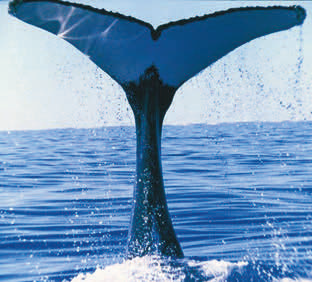Humpback Whale
Humpback whale
Megaptera novaeangliae
Description
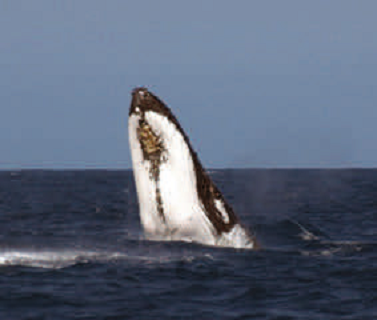
| Lifespan 45-50 years |
Head-body 14-18m |
Weight 45 tonnes |
Humpback whales are named for their small, hump-like dorsal fins. They are also distinguished by long, knobbly flippers, which can be a third of their body length. They are black on top and white underneath, with long pleats running down the throat and enabling it to expand while feeding. Blubber up to 50cm thick keeps humpbacks warm in the coldest seas. Humpback whale songs can be heard from 185km away.
Diet and habitat
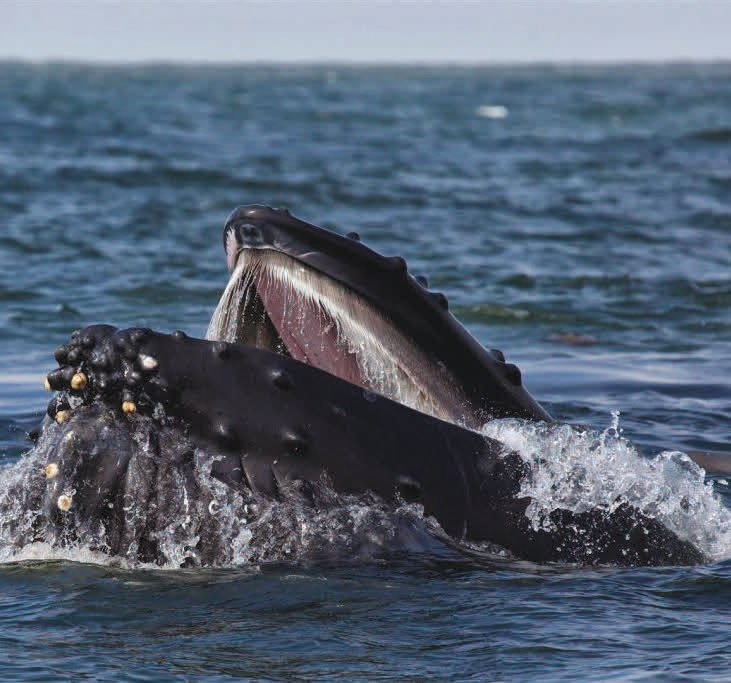
Humpbacks have no teeth. They feed by taking huge gulps of water and then straining zooplankton (krill and other tiny animals) out of the water through baleen – bristly, comb-like plates hanging from their palates. A humpback can eat nearly one tonne of food a day and can become enormous due to the richness of its diet and the buoyancy of water.
Breeding
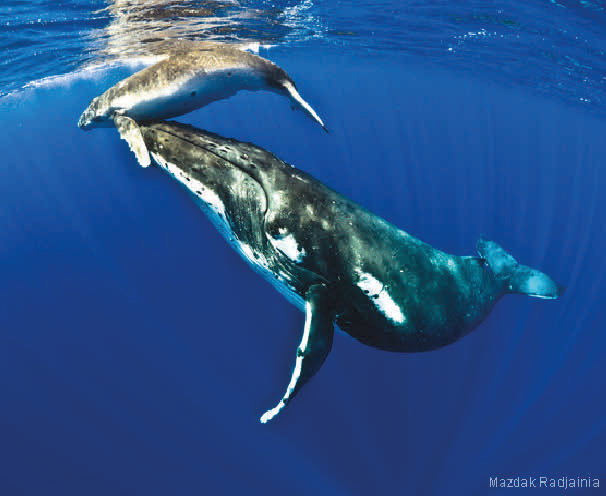
| Gestation 12 months |
No. young 1 |
Weaned 11 months |
Only the males sing, perhaps to attract mates. Whales reach maturity when they are about 11m long (from 4 –10 years old). Females calve once every three years between June and October. A newborn calf can be 4.5m long and weigh 1.5 tonnes. Nursing calves may gain more than 45kg a day as they suckle milk with 35% fat.
Distribution
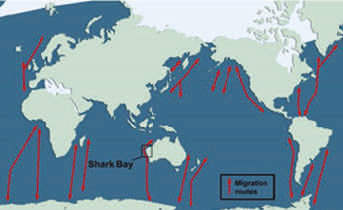
Each year humpbacks swim thousands of kilometres between their tropical breeding grounds and Antarctic feeding grounds. More than 20,000 humpback whales, the largest humpback population in the world, migrate along the Western Australian coast. Many call into Shark Bay during their southward migration in spring.
Status

Humpbacks were hunted almost to extinction until 1963 (when just 5-6% remained) they became a protected species. Despite its recovery since then humpbacks are still considered threatened.
Fact sheet
SHARK BAY
World Heritage

